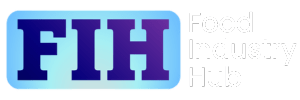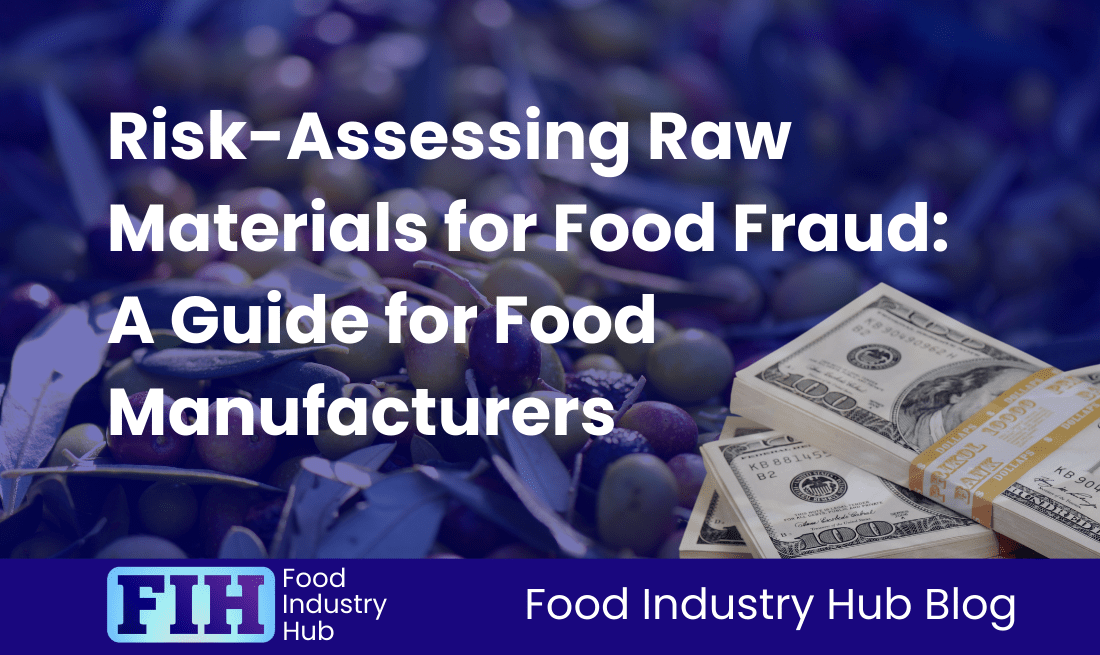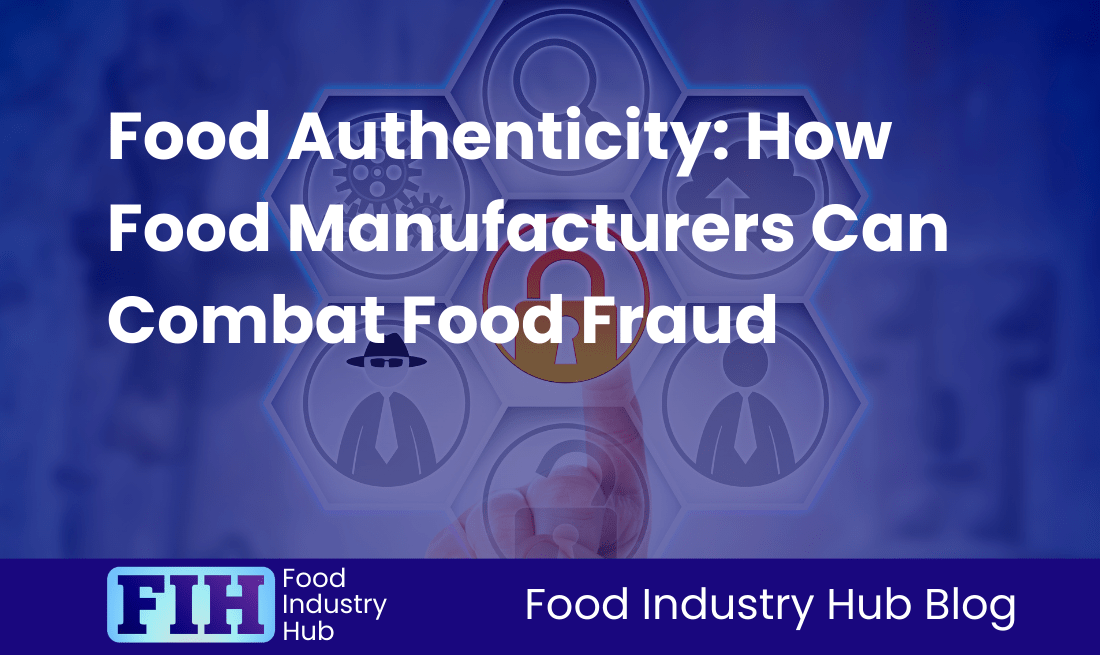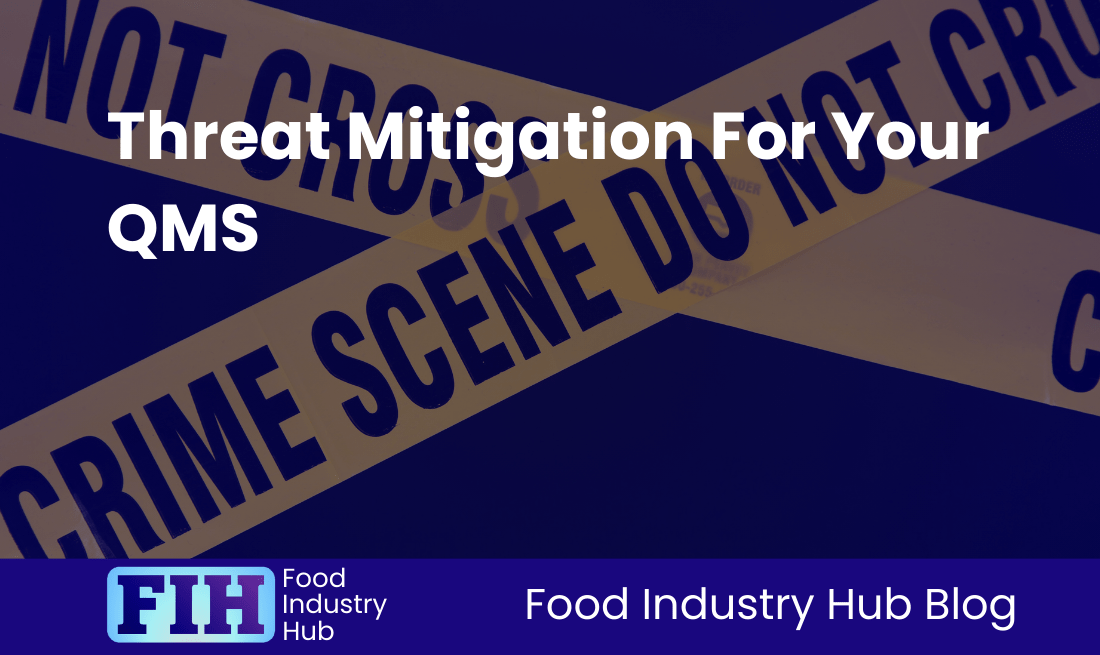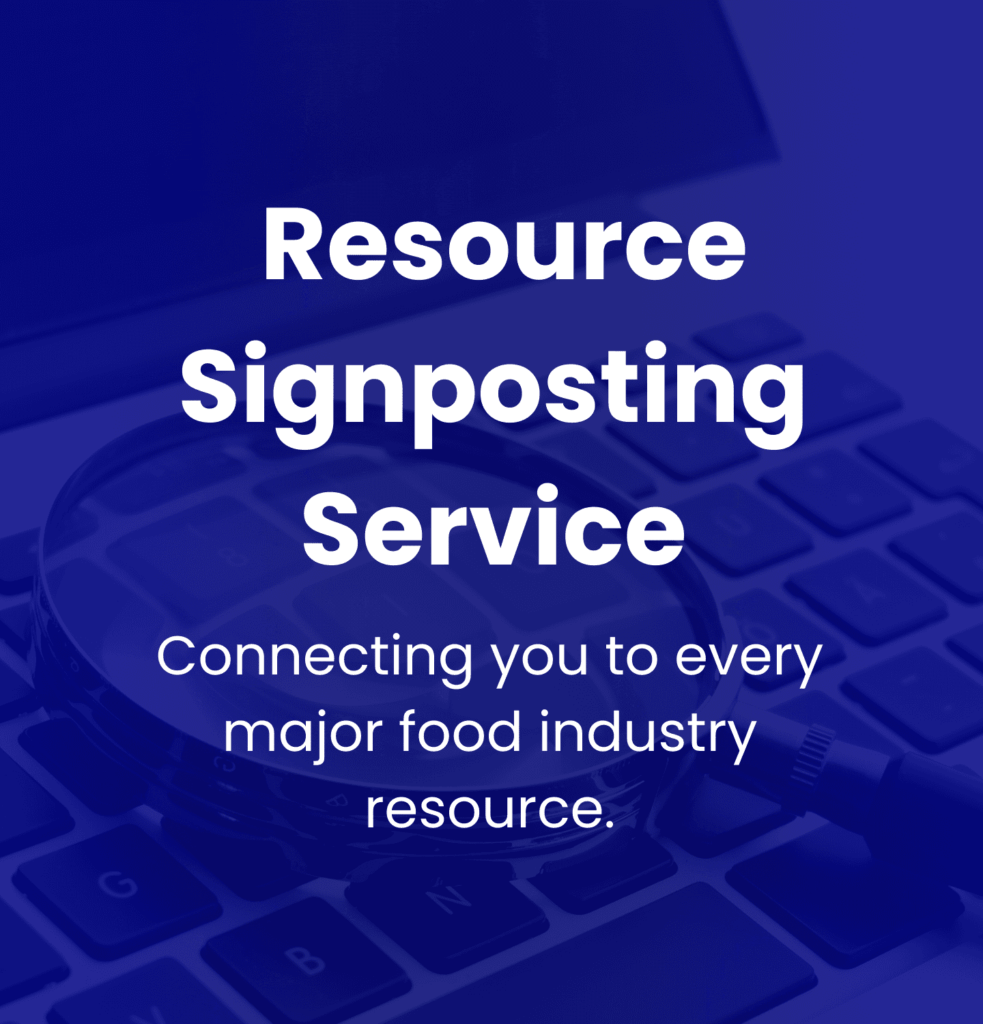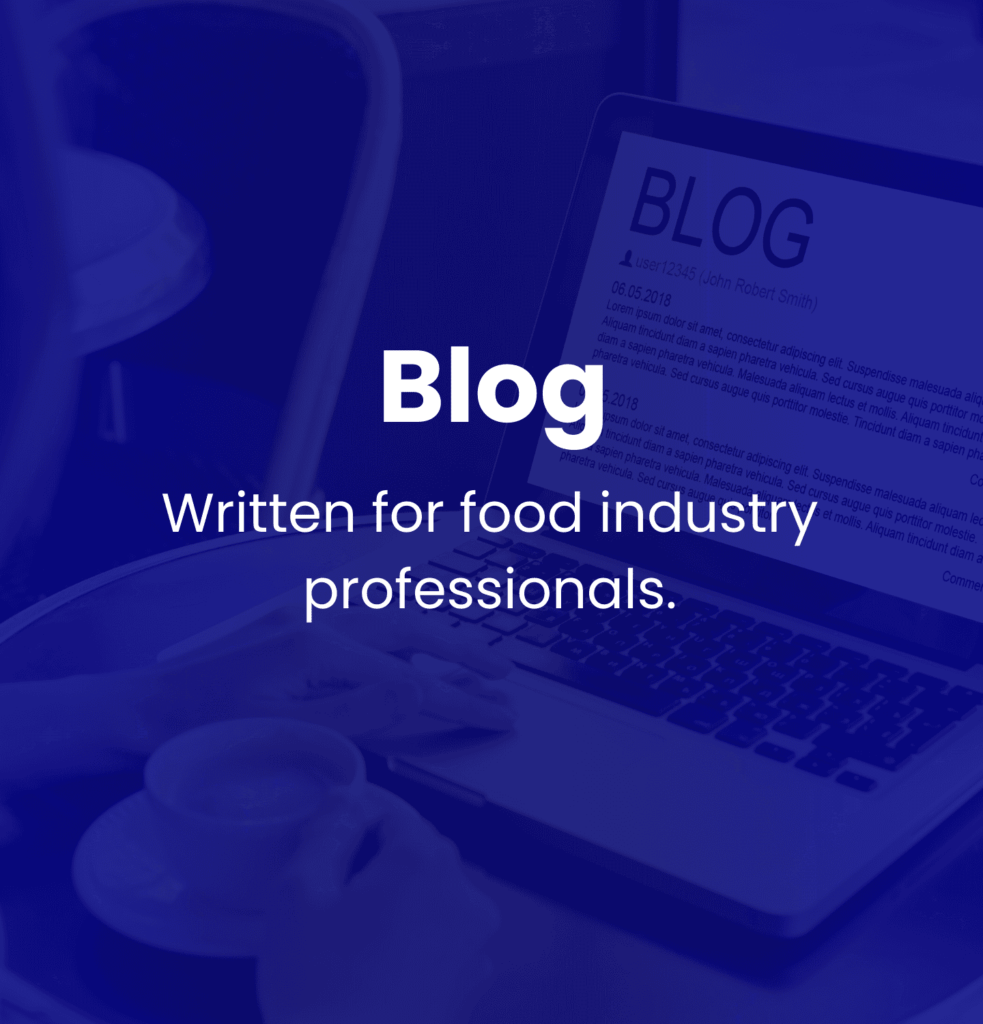Know: Economically Motivated Food Fraud
Contents
Introduction
Key Takeaways
Defining Economically Motivated Food Fraud and Its Scope
Regulatory Frameworks and Approaches to Enforcement
High-Risk Products and Vulnerabilities within Supply Chains
Detection Technologies and Methods of Analysis
Strategies to Mitigate Economically Motivated Food Fraud and Industry Best Practices
Economic Aspects and Public Health Impacts of Food Fraud
Environmental Sustainability and Impact of Economically Motivated Food Fraud
Importance of Consumer Awareness and Education
Conclusion
Introduction
Economically Motivated Food Fraud (EMF) presents a major threat to the trustworthiness of the global food supply chain. This type of deceit is fundamentally anchored in misleading consumers for financial profit, often demonstrated through the adulteration, substitution, or mislabelling of products. Such tactics linked with EMF pose not only a health risk for consumers but also a significant challenge to the credibility of the food manufacturing sector.
EMF involves the purposeful adulteration of food items for financial gain—whether it be the addition, removal, or replacement of ingredients. This deceptive activity can encompass diluting premium components with less expensive substances, swapping authentic elements with fraudulent ones, or inserting unapproved additives to amplify a product’s aesthetics or flavour. The U.S. FDA categorises this fraud as the act of substituting, or adding substances to augment a product’s projected value or to lower the costs of production.
Deciphering the concept of EMF carries far-reaching implications for professionals in food manufacturing. It has a considerable impact on brand integrity, consumer health, and regulatory compliance. Studies suggest that the annual financial burden of EMF on the global food industry falls somewhere between $10 billion and $15 billion—illuminating the combined economic and reputational hazards. Even one incident of economically driven adulteration can result in a grand financial loss and diminish consumer confidence, which is undeniably challenging to rebuild.
EMF is closely linked to several significant aspects of the food industry, including food safety, quality, legality, and authenticity. While the primary incentive for engaging in fraudulent practices is financial, the fallout can lead to earnest health concerns, especially with the unauthorised inclusion of toxic or allergenic substances in food items. On a legal note, EMF breaks established food safety regulations and can evoke serious penalties for those deemed guilty. Furthermore, assuring authenticity is key for preserving consumer faith and maintaining market integrity.
This article will spotlight substantial themes around EMF, such as its definition and scope, the designed regulatory structures to combat it, identification of high-risk areas more prone to fraud, and the technologies utilised in detection initiatives. As a collective, these elements intensify the immediate need for food industry professionals to address the complex challenges posed by economically motivated food fraud.
Key Takeaways
Economically Motivated Food Fraud (EMF) poses a significant problem for the international food sector, particularly in areas such as the UK, EU, and USA. Food fraud has a substantial economic impact, with annual losses ranging between $10 to $15 billion and an estimated 10% of food products sold worldwide affected. Complex supply chains, worldwide sourcing, and a lack of complete transparency facilitate fraudulent activities like adulteration and mislabelling, especially in regards to high-value products such as honey, meat, and organic foods.
Regulatory Frameworks and Enforcement
The response to EMF varies across regions due to differences in regulatory structures and enforcement methods. The EU, guided by institutions like the European Food Safety Authority (EFSA), places emphasis on a harmonised approach to food safety. Conversely, the USA leans on a blend of self-regulation and federal oversight, primarily via the FDA. The absence of a shared legal definition for food fraud complicates enforcement, making international collaboration and concerted action essential in devising effective deterrents to fraud.
Supply Chain Vulnerabilities and Mitigation Strategies
The multifaceted nature of the food supply chain, encompassing various stages and diverse sources, presents vulnerabilities which make it prone to fraud. Advanced detection technologies, like DNA testing and AI analytics, are instrumental in pinpointing fraudulent activities. Efforts to combat EMF should emphasise improving traceability, implementing preventive control programmes, and encouraging information sharing. It is essential for industry participants to embrace comprehensive measures to safeguard the integrity of the food supply chain and maintain consumer confidence.
Food Industry Hub Management Systems can significantly boost the effectiveness of your food safety and quality management system, leading to improved confidence and elevated quality assurance throughout your operations.
Defining Economically Motivated Food Fraud and Its Scope
Core Definition
Economically Motivated Food Fraud (EMF), or Economically Motivated Adulteration (EMA), is the practice of intentionally modifying, substituting, or misrepresenting food products for monetary gain. Examples of these illicit practices include the dilution of premium ingredients with lower-cost substitutes or the enhancement of perceived value by mislabeling products. The U.S. Food and Drug Administration (FDA) specifies that EMF involves deliberate food adulteration carried out to boost profitability, cementing the central role of economic drivers in this form of fraud [Source: FDA]. It is important to differentiate EMF from unintentional safety breaches in food, as the latter usually arises from ignorance or negligence, not motivated by deception and financial gain.
Distinguishing EMF from Broader Food Fraud Concepts
Although EMF is a type of food fraud, it is notable for being primarily driven by economic considerations. The broader spectrum of food fraud covers various deceptive activities, including theft or misdirection of food products even when profit isn’t the primary motive. Misrepresentation of ingredient origins or standards, for example, qualifies as food fraud but does not necessarily meet the specific parameters of EMF unless a direct profit motivation can be established [Source: FDA].
Forms of Food Fraud
Several forms of food fraud have been identified:
Adulteration
This involves the intentional addition or substitution of substances in food products with an aim to reduce manufacturing costs and inflate profits. As an instance, a quite prevalent practice of adulteration is diluting olive oil with cheaper vegetable oils and then advertising the concoction as 100% olive oil [Source: FSNS].
Mislabelling
Unscrupulous practices such as misrepresenting product characteristics, making false claims of organic certification, or incorrect geographical origins contribute to this form of fraud. These illicit activities not only deceive consumers but also compromise the trust placed in food labelling standards [Source: Congressional Research Service].
Grey Market Activities
These activities involve the selling of food products through unofficial channels, bypassing regulatory supervision and safety norms. This can lead to adulterated or substandard products entering the market, which poses serious safety risks [Source: FAO].
Global Recognition
On the international stage, EMF is recognised by FDA, the European Union (EU), and the Food and Agriculture Organization (FAO). For example, the FDA proactively employs strategies to thwart EMF within the regulatory framework of the Food Safety Modernization Act (FSMA), mandating preventive measures against intentional adulteration. The EU has also adopted measures to combat food fraud, underscoring the importance of cooperation among member states to maintain food integrity. The FAO similarly offers guidelines to bolster food safety and uphold quality standards in response to challenges stemming from EMF.
Susceptible Products
Several food categories are highly susceptible to EMF due to their premium status and the relative ease at which they can be altered. These include:
Olive Oil
Given its premium nature, olive oil is often targeted for adulteration by mixing it with cheaper oils, which deceives consumers about its true nature.
Fish
Seafood fraud often involves replacing high-value species with cheaper alternatives, posing health risks if the substituted species are contaminated.
Honey
Fraud in honey typically involves dilution with cheaper sweeteners, affecting its quality and authenticity.
Dairy Products
Unlawful practices such as the addition of melamine to milk products to artificially inflate protein content present significant health risks, especially to vulnerable sections of the population such as infants.
These categories underscore the extent to which economic motivations exploit gaps in regulatory enforcement, underscoring the need for stronger vigilance and stringent testing protocols to safeguard consumers in the food manufacturing industry.
Regulatory Frameworks and Approaches to Enforcement
Food safety and authenticity are effectively upheld through robust regulatory frameworks and enforcement measures that focus on proactive prevention and transparent accountability. Key regulations and enforcing bodies particularly in the US and the EU have made significant strides in combating Economically Motivated Food Fraud (EMF) to ensure the integrity and safety of the food supply chain.
Key Regulations
Food Safety Modernization Act (FSMA)
The FSMA came into effect in 2011, marking a historic shift from reactive to proactive strategies in mitigating foodborne illnesses across the United States. The Act mandates food manufacturers to devise and implement preventive control plans that, following a comprehensive hazard analysis, are designed to address potential risks in the supply chain. The FSMA notably bolsters the FDA’s regulatory powers, allowing for intense inspections, compulsory recalls of unsafe products, and heightened monitoring of imported foods. Noteworthy implications of the Act include the Hazard Analysis and Risk-Based Preventive Controls (HARPC) that obligate food facilities to develop detailed safety plans to manage potential hazards effectively. The Act also includes the Foreign Supplier Verification Program (FSVP), which compels importers to ensure that foreign suppliers abide by U.S. safety standards, significantly reducing the chance of EMF affecting consumers [Source: FDA].
Regulation (EU) 2017/625
This regulation highlights the importance of monitoring across the food and feed supply chain within the EU. It demands adherence to a range of laws that encompass food safety and regulations related to animal and plant health. The regulation also enhances a risk-based approach to inspections and compliance checks, effectively directing resources to areas of greatest concern. Moreover, it calls for national authorities to to disclose annual reports detailing their control methods, thereby propelling transparency and accountability among EU member states. The extensive reach of Regulation (EU) 2017/625 emboldens safeguards against EMF by subjecting every stage of the food supply chain to comprehensive controls and supervision, thus abating risks to public health [Source: EUR-Lex].
Regulatory Bodies
UK’s National Food Crime Unit (NFCU)
Operating within the Food Standards Agency, the NFCU plays a vital role in confronting food crime, prominently including EMF. The NFCU capitalises on intelligence-led operations and tight collaboration with law enforcement bodies and industry entities to expose fraudulent activities. Although specific tactics for tackling EMF may not be directly stated, the primary objective of NFCU remains the protection of public health through coordinated efforts involving profound collaboration and data sharing among enforcement organisations to anticipate and alleviate food crime risks.
US FDA
Within the United States, the FDA employs a diversified approach founded on the principles of FSMA in managing EMF. The agency undertakes rigorous surveillance and prioritises inspections of high-risk food products and facilities while collaborating with state and local authorities to certify compliance with food safety regulations. Preventive initiatives against intentional adulteration, frequently a significant facet of EMF, involve diligent monitoring of food production processes and continual communication with food manufacturers to enhance compliance and supervisory mechanisms.
Sign-up for the Food Industry Hub Mail Service
We regularly produce new content for food industry professionals, and the Food Industry Hub Mail Service is the best way to stay up to date with the latest additions.
Signup today to be added to the Food Industry Hub mailing list.
High-Risk Products and Vulnerabilities within Supply Chains
Susceptible Targets
Economically Motivated Food Fraud (EMF) tends to focus on high-value goods or ingredients with variable market demands, steep price fluctuations or regulatory gaps. Among the commonly defrauded items are milk and dairy products, historically known to be adulterated with non-edible chemicals to amend texture and appearance, deceiving customers while compromising public health standards [Source: Food Engineering].
Coffee and tea often have their quality compromised by the addition of fillers like chicory, causing significant financial loss for consumers and producers alike [Source: AIB International]. Products marked as organic are at risk of misrepresentation to take advantage of their premium pricing. Also, nut species, notably in circumstances relating to pine nuts, might be replaced with non-edible species, resulting in customer deception.
Complications within Global Supply Chains
The intricacy of global supply chains markedly accentuates vulnerabilities concerning EMF. This dynamic primarily results from several interrelated factors:
- Complex Supplier Networks: Supply chains typically extend through various countries and involve numerous intermediaries. This complexity hampers efforts to effectively monitor and control product quality, providing fraudsters with increased opportunities to operate without detection.
- Regulatory Gaps: Differing food safety regulations between regions offer loopholes that fraudsters can exploit. Countries with weaker enforcement measures may show increased fraud incidents due to insufficient oversight [Source: KPMG].
- Economic Pressures: Unstable market conditions can induce suppliers to reduce costs and engage in dishonest activities. Economic recessions escalate these risks, as some businesses may prioritise transient gains over the sustained integrity of the supply chain.
Influence of COVID-19 on Food Fraud Risks
The global pandemic brought about by COVID-19 has largely altered food fraud dynamics, adding to the existing vulnerabilities within worldwide supply chains. The changes range from:
- Workforce Disruptions: Health restrictions resulting in lockdowns substantially reduced the workforce within food production facilities. This shrinkage led to a decrease in monitoring and opened up more chances for fraudulent tendencies.
- Material Shortages: Interferences in raw material supplies often forced businesses to implement cost savings, leading to ingredient substitutions or adulterations to protect profit margins.
- Changes in Consumer Behaviour: Economic slumps caused a significant shift in consumer behaviour. This shift saw many consumers opting for more affordable alternatives, further enticing suppliers to indulge in dishonest practices.
- Digital Transformation: The migration towards digital platforms for sales and distribution reduced personal interactions and monitoring, escalating the likelihood of fraudulent activities as verification processes became more relaxed.
Species Substitution and VACCP
Species substitution is a fraudulent practice where a high-value product like a specific fish species is deceitfully replaced with a cheaper alternative, often unbeknownst to the consumers. The Vulnerability Assessment Critical Control Points (VACCP) framework plays a fundamental role in pinpointing and mitigating risks connected with food fraud within the supply chain. This approach encapsulates three key factors:
- Risk Assessment: Identifying possible fraud threats and assessing their probability and impact is essential for determining appropriate countermeasures.
- Control Measures: Setting up sound processes impervious to fraudulent activities is key to preserving the integrity of foodstuffs.
- Monitoring and Corrective Actions: Consistent surveillance and the immediate address of discrepancies ensure product authenticity and quality throughout the supply chain, building defences against economically motivated food fraud. The deployment of the VACCP framework empowers food manufacturers to systematically assess vulnerabilities and enhance the overall safety of their supply chains against profit-driven food fraud.
Detection Technologies and Methods of Analysis
Advancements in Detection
Detection of food fraud motivated by economic gain hinges on advanced technologies that ensure food safety and substantiate authenticity. Significant improvements in detection technologies encompass:
- Isotope Ratio-Meter Technology: This groundbreaking technology, initially conceived for space investigation, utilises laser spectroscopy to examine isotopic signatures in food items. Its primary use is to identify adulterations in commodities like olive oil, thereby expanding on traditional methods of fraud detection. Continuous developments are directed towards refining its portability and cost-effectiveness, making it more feasible for broad-based use within the food industry [Source: Food Dive].
- Artificial Intelligence (AI) and Machine Learning: This technology plays a pivotal role in processing considerable datasets to flag patterns and abnormalities suggestive of food fraud. Approaches including near-infrared spectroscopy and E-nose sensors are deployed to uncover adulteration in everyday products such as rice and milk. Machine learning algorithms’ ability to analyse intricate datasets augments the speed and preciseness of fraud detection, thus facilitating proactive interventions [Source: Lab Manager].
- Portable Testing Devices: The introduction of compact testing devices allows for immediate on-site analysis using infrared, ultraviolet, and visible light spectrometry. These instruments enable instant evaluation of food quality, hence shifting detection from laboratories to actual surroundings. This is essential for improving responsiveness to potential fraud within the supply chain.
Significance and Challenges of Cutting-Edge Detection Technologies
The importance of these technological advancements should not be understated as they offer an anticipatory strategy towards preserving food integrity within rapidly evolving global supply chains. However, more than a few obstacles impede their wide adoption:
- Cost and Accessibility: The initial investment necessary for deploying advanced detection technologies poses a significant hurdle for many small-scale food manufacturers. The monetary impact of buying these state-of-the-art analytical devices, coupled with the ongoing expenditure of maintaining them and managing data, often strain smaller businesses.
- Data Quality: The efficiency of AI algorithms is closely tied to the quality of reference databases. Inferior or inadequate training datasets can generate imprecise fraud detection results which can then complicate efforts to appropriately respond to food fraud incidents.
- Evolution of Fraudulent Techniques: As detection technologies continue to evolve, so too do the methods employed by fraudsters. This creates an on-going cycle of competition between fraud prevention and deceptive practices. Therefore, it becomes necessary to continually improve detection techniques to keep up with these underhanded tactics.
Cost Barriers
Small-scale manufacturers face pronounced challenges when it comes to adopting these advanced detection technologies. The high initial costs coupled with ongoing expenses for staff training and technology maintenance often outweigh the anticipated benefits, thereby creating resistance against the adoption of necessary innovations.
To mitigate such obstacles, partnerships and financial assistance programmes intended to subsidise technology costs become indispensable. Advocacy within the industry for increased funding and resource allocation could significantly promote technological adoption among small manufacturers.
Latest Methodologies
Innovative methods that ensure food safety increasingly align with collaboration within Food Authenticity Networks. These networks allow stakeholder engagement, facilitating the sharing of imperative data and preferred practices, thereby collectively boosting their capacity to pinpoint food fraud:
- Blockchain Technology: Blockchain buttresses transparency within supply chains, enabling real-time tracking of products from the point of origin till they reach the consumer. This unalterable ledger makes it exceedingly difficult for deception operators to falsify product origins or authenticity claims.
- Focused Integration of Data for Early Signals (FIDES): This initiative along with similar ones underline the value of collaboration in creating early warning systems for fraud detection. By consolidating expertise and data across organisations, these networks create a powerful defensive measure that can highlight potential fraud threats before they magnify into extensive issues.
Such advancements in methodologies and collaborative networks enhance the food manufacturing industry’s overall guarantee of food safety and authenticity. As a result, they offer protection to consumers and businesses from the potential risks associated with economically motivated food fraud.
Strategies to Mitigate Economically Motivated Food Fraud and Industry Best Practices
Frameworks for Assessing Risk: The Four A’s Framework
The Four A’s Framework offers a structured approach to alleviate risks linked with economically motivated food fraud, by concentrating on four key components: Awareness, Assessment, Action, and Audit.
Awareness entails understanding common forms of food fraud, including substitution, mislabelling, and adulteration. Staying informed about historical events and current trends that could present vulnerabilities in the supply chain is key. Encouraging employees and stakeholders to remain alert aids in early detection of potential fraud risks.
Assessment mandates comprehensive food fraud vulnerability assessments (FFVAs) to identify and measure potential risks across the supply chain. This analysis calls for evaluation of various elements such as supplier credibility, supply chain complexity, economic drivers for fraud, and existing quality control practices.
Action involves drafting and executing targeted mitigation strategies, which could involve improving traceability systems to increase transparency, and enforcing solid quality control measures to prevent fraudulent products from infiltrating the market.
Audit calls for regular review and evaluation of the fraud assessment processes and the efficacy of mitigation strategies. This continuous auditing ensures that the business remains resilient against emerging fraud tactics and points out when protocol updates are necessary [Source: FSSC].
Choosing Suppliers: Diligent Supplier Assessment and Compliance Verification
Choosing trustworthy suppliers can significantly diminish the risks related to food fraud. In-depth supplier assessment should involve not just regulatory compliance verification, but also an examination of each supplier’s previous performance with respect to fraud incidents. Notable practices include:
- Supplier Audits: Regular audits ensure suppliers comply with food safety and fraud prevention standards, while promoting an environment of accountability. This process should evaluate compliance with respected certification bodies, verifying that suppliers meet rigorous safety and quality protocols thereby minimising fraud risk.
- Certification Verification: Working with suppliers who hold certifications from GFSI-recognised schemes such as BRCGS can enhance reliability of compliance. These certifications act as a quality assurance tool, confirming that suppliers adhere to best practice and pertinent regulatory requirements tied to food safety and fraud prevention [Source: GFSI].
- Continuous Monitoring: Implementing mechanisms for ongoing supplier monitoring and feedback can cultivate a transparent relationship, allowing businesses to respond promptly to emerging risks. This cooperative approach encourages open communication and shared responsibility for abating fraud risks in the supply chain.
The Role of GFSI and BRCGS
The Global Food Safety Initiative (GFSI) proposes globally recognised benchmarks for food safety management systems, underscoring the need for the integration of food fraud prevention into these systems. Its guidelines advocate for thorough vulnerability assessments and robust mitigation plans, which are imperative for preemptively countering food fraud risks.
Mirroring these industry standards, organisations can considerably strengthen their defenses against economically motivated food fraud, thus enhancing consumer safety and solidifying brand integrity.
Economic Aspects and Public Health Impacts of Food Fraud
Food fraud presents a significant challenge to the food industry, both economically and with respect to public health. Different forms of food fraud, including counterfeiting, mislabelling, and adulteration, result in substantial global financial losses annually.
Global Financial Losses
Estimates suggest that the global financial impact of food fraud vibrates between $10 billion and $40 billion each year. Some assessments even suggest figures could rise to $50 billion when considering additional factors such as consumer distrust and the cost of regulatory compliance [Source: Bangor University]. These losses result from product recalls, litigation, and damage control efforts necessitated by public exposure.
Public Health Risks
Food fraud can pose serious public health dangers, at times leading to grave illnesses and fatalities. A notable instance includes the melamine contamination crisis in China, which caused widespread illness and infant deaths [Source: Harvard International Review]. Another example is the sale of seed oils misrepresented as premium olive oil, showcasing the risk of widespread health crises from mislabelled goods. These mislabelled products especially put consumers with allergies at risk, potentially leading to severe allergic reactions or illness [Source: Food Safety and Nutrition Services].
Brand Reputation
Food fraud scandals inflict damaging and lasting effects on a brand’s reputation, and consumer trust can deteriorate rapidly as a result. The European horsemeat scandal is one such instance of how deceptive practices can cause a swift decline in consumer confidence. Affected companies often face large financial losses not only from product recalls and legal repercussions but also from the ongoing expenses of restoring trust and maintaining compliance with intensified regulatory supervision [Source: Congressional Research Service].
Fraud Opportunity Triangle and Diversion Fraud
The Fraud Opportunity Triangle comprises three elements—motive, opportunity, and rationalisation—which create such conditions that economically motivated food fraud can occur. In essence, financial incentives form the motive, potential arises from gaps in regulatory watchfulness and inherent susceptibilities in supply chains, and individuals often justify deceptive actions as a business necessity in a highly competitive marketplace [Source: Food Safety and Nutrition Services].
Diversion Fraud involves diverting legitimate products from their designated markets to unauthorised channels, often to capitalise on pricing discrepancies. While this form of fraud may not involve direct adulteration, it can complicate fraud detection efforts and pose additional risks to public health if diverted products fail to comply with safety standards. Understanding these dynamics is key to devising effective strategies to tackle food fraud and beef up protections for public health.
To promote trust, protect public health, and ensure economic stability, it is essential for the food manufacturing industry to address these overlapping economic and health aspects of food fraud.
Environmental Sustainability and Impact of Economically Motivated Food Fraud
Economically Motivated Food Fraud (EMF) raises considerable environmental concerns by threatening the ecological balance and reducing sustainable practices within food production. This section explores the potential ecological damage inflicted by EMF and its influence on resource consumption and environmental sustainability.
Environmental Implications
Ecological Damage from EMF Practices
EMF practices lead to environmental degradation through the reliance on harmful chemicals and unethical farming methods. A significant environmental concern relates to the use of illegal and toxic pesticides intended to boost productivity cost-effectively. These pesticides often find their way into soil and water systems, causing extended harm and negatively affecting ecosystems. Formaldehyde, occasionally used unlawfully for food conservation, can cause animal health problems and disrupt local ecological equilibrium, reducing the lifespan of certain species.
In addition, EMF leads to wastage in resources. The replacement of real ingredients with substandard or fake alternatives often results in reduced efficiency in food production. This kind of activity may demand more resources such as water and energy, increasing waste within supply chains. This inefficiency is particularly worrisome when demand is high, as offenders put profit before quality, placing additional stress on environmental resources [Source: Food Safety Tech].
The practices associated with EMF can also present a threat to biodiversity. Mislabelling inexpensive fish breeds as luxury types can promote overfishing, disrupting marine ecosystems, threatening various species, and undermining ecosystem stability and biodiversity [Source: Food Fraud Advisors].
Wider Consequences
Inefficient Resource Utilisation and Environmental Threats
The broader implication of EMF is not limited to immediate ecological damage, but also extends to resource misuse that compromises environmental integrity. EMF practices contribute to significant inefficiencies in food supply chains due to substituting real ingredients with lesser-quality alternatives. This not only demands more processing but also enhances the overall environmental impact of food production, creating a reverse scenario where cost-saving efforts through fraud result in more substantial ecological harm.
Diminished customer trust in food systems as they become more aware of food fraud can lead to unstable markets. Businesses may respond to this by cutting costs further, often at the expense of sustainable methods. This sequence continues to promote environmentally damaging practices, putting more pressure on the environment [Source: Food Safety Magazine].
Long-term environmental hazards associated with EMF practices are considerable. Persistent use of damaging methods can cause cumulative effects such as soil and water pollution from illegal pesticide use. These kinds of impacts pose ongoing health risks to communities and wildlife alike and put additional strains on natural resources, leading to expensive remediation efforts in the future.
The environmental repercussions of Economically Motivated Food Fraud highlight the imperative need for the food manufacturing industry to reassess its practices and put emphasis on sustainable, transparent methods. Addressing these concerns can help reduce the harmful ecological consequences and support a more robust food system.
Importance of Consumer Awareness and Education
The Crucial Role of Consumers in Identifying and Reporting EMF Incidents
Consumer awareness plays a key role in combatting Economically Motivated Food Fraud (EMF). A consumer who is equipped with knowledge about food fraud is better positioned to identify and report cases revolving around practices such as food misrepresentation, adulteration, and mislabelling.
Consumers who are informed can spot disparities in product labelling and pricing. As an example, they can question the validity of fraudulent claims such as “all-natural” or “100% organic” based on certifications and observable facts. Research indicates that a decrease in willingness to pay for suspected fraudulent products is seen among consumers who are educated about food fraud issues, thereby exerting pressure on businesses to enhance quality control measures and retain customer trust [Source: PMC].
The engagement of the community enhances the awareness of consumers. Local consumer advocacy groups might organise seminars or workshops to educate their members about food fraud indicators, thereby equipping them to report suspicious products to the appropriate authorities. These small-scale initiatives endorse a sense of responsibility and contribute to complete oversight of food safety within communities.
Implementing Strategies to Boost Consumer and Community Awareness
To increase awareness and knowledge about food fraud among consumers, there are several strategic initiatives that can enhance vigilance and proactive reporting:
- Various media channels can be utilised to deliver educational campaigns that can substantially increase consumer awareness. These campaigns could focus on comprehending food labels, how to understand ingredient lists, and how to identify fraudulent claims. The campaigns can make use of social media, community forums, or television to engage the public.
- Organising workshops can empower consumers, particularly if these events are focused on food fraud’s impacts and detection methods. Such events could include practical sessions on analysis of food labelling and the importance of certifications. Collaborations with local health departments or food safety charities can enrich these initiatives and improve reach [Source: PMC].
- Building partnerships with recognised consumer advocacy groups can reinforce efforts to educate the public about food fraud. These groups usually have the necessary resources and expertise for extensive outreach, thereby promoting a thorough understanding and engagement in the mission to maintain food integrity.
- Technology can be leveraged through mobile applications or websites to allow consumers to verify food product authenticity with relative ease. For instance, scanning barcodes to access information on sourcing and ingredient verification can empower consumers to make informed choices. Such integration of technology not only educates but also encourages individuals to act when they encounter suspicious products.
- Creating accessible platforms for consumers to voice their suspicions about food fraud can enhance community vigilance. Government agencies and non-profit charities can set up straightforward online portals allowing consumers to submit reports and receive feedback, thereby fostering greater participation and accountability within the food production industry.
Conclusion
The issue of Economically Motivated Food Fraud (EMF), and its specific form known as Economically Motivated Adulteration (EMA), emphasises the need for robust management and preventive measures in the food manufacturing industry. EMA is characterised by the deliberate, fraudulent alteration or inclusion of substances in foodstuffs to increase profit margins or lower production expenses, thereby endangering public health and the overall wholeness of the food supply chain. Historic incidents, such as the case of the melamine-adulterated infant formula in China, highlight the potentially devastating fallout of such deceit, spanning severe health hazards and the erosion of consumer trust.
While the importance of counter-fraud initiatives is absolute, the U.S. Food and Drug Administration (FDA) and comparable regulatory bodies worldwide play key roles in waging war on EMA via structures like the Food Safety Modernisation Act (FSMA), an effort to reinforce food safety protocols and act as a deterrent against deliberate adulteration and other fraudulent schemes [Source: FDA]. While the central focus of the FSMA frequently encompasses wider food safety risks, it procures methods for mitigating susceptibilities that could lead to economic fraud.
Multiple prospective solutions should be considered to improve the resilience of food supply chains against EMA. The development and implementation of advanced detection technology is key to identifying adulterated products and barring them from entering the marketplace. Regulatory bodies should also continually update and fortify monitoring processes to successfully manage ingredients and suppliers. Increased transparency throughout the supply chain can assist companies in verifying compliance and upholding integrity standards, much like the proactive steps taken by industry leaders like Danone and others striving to ensure safe practises.
In conclusion, the fight against Economically Motivated Food Fraud calls for a broad solution that integrates solid regulatory frameworks, advanced detection methods, and a culture of transparency throughout the food industry. These combined efforts serve to guarantee that food supply chains retain safety and reliability, reducing the risks linked to this emerging threat and safeguarding public health.
About The Food Industry Hub Knowledge Centre
The Food Industry Hub knowledge centre delivers informative content on a variety of topics pertinent to the food manufacturing industry.
You can return to all topics by clicking here.
From The Food Industry Hub Signposting Service
Additional resources from The Food Industry Hub Signposting Service.
From The Food Industry Hub Blog
Expanding on this topic with related content from our blog.
